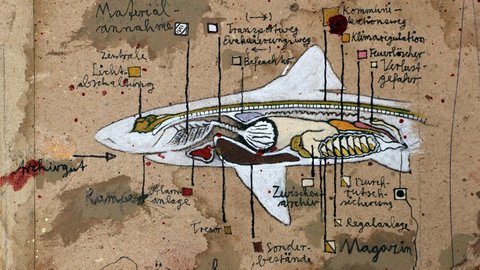
Plakatausschnitt: "Die Hüter des Unrats"
© Susann Maria Hempel
Once upon a time, rubbish was the antithesis of the archive; it comprised everything that was missing from the archives; all their gaps: it was the ANARCHIVE. However, in a seemingly simple “archival gesture”, it had itself declared an ALTERNATIVE ARCHIVE that “penetrated into people’s most intimate secrets” more than any other, “since every deed and every action left its mark on it, the irrefutable proof of its doing” (Tournier, Michel: Gemini). By this means, rubbish thus blossomed into the GREAT GUARDIAN OF THE THINGS that promised to hand down the legacies of our civilisation to the archaeologists of the future.
Landfill became the dark side of our stored memory; an archive waiting to be rediscovered and interpreted. “Throwing things away” took on the same meaning as “archiving” them, as the people producing waste could be seen as enabling the present to be “dug up” in future, when it became the past. Later – yes, later – it was said, even the most trivial things would acquire significance! Or would have, if the paradox of “valuable garbage” had not come crawling out of the sticky mass of waste.
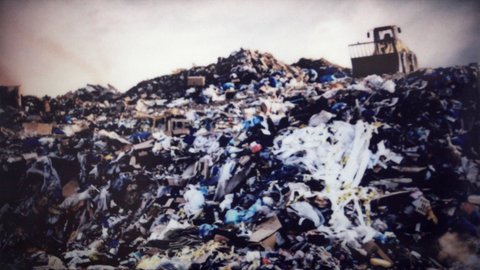
Filmstill aus Susann Maria Hempels "Die Hüter des Unrats"
© Susann Maria Hempel
When things stopped being worn out, and their material form instead became recyclable, the present began to be erased from the future, destroying all proof that it had ever existed. Recyclable things are reluctant to be preserved (in landfill); they strive to stay in circulation through the transformation of their recyclable materials! When plans for a circular economy reach the lofty heights of endless recycling processes, it is thus at the cost of the total loss of any memory of the things, the form they took and the history of their use.
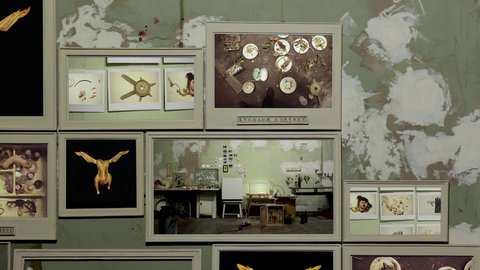
Filmstill aus Susann Maria Hempels "Die Hüter des Unrats"
© Susann Maria Hempel
One factor flies in the face of this advancing loss of memory, however, and that is MIS-SORTING. In some German states, this is punished with fines. Occasionally, the practice is monitored using surveillance cameras or tracked by a kind of “rubbish police” whose job is to check whether rubbish ends up in the right bin. Globally, however, there is one giant container that holds the waste the world fails to sort properly: the sea…
A host of mobile archive boxes populate the depths of the oceans. Tonnes of rubbish are preserved there in animals and their stomachs, which provide a home for the waste abandoned by the human species – and a kind of storage case for their memories.
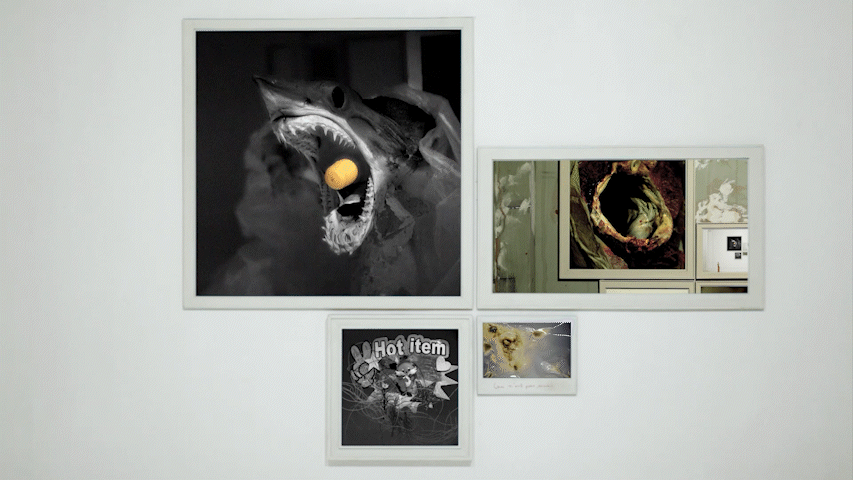
Ausschnitt aus Susann Maria Hempels "Die Hüter des Unrats"
© Susann Maria Hempel
As long as it lives, the animal is a locked MUSEUM IN A BOX; something of a secret. The animal initially keeps the things it eats (and cannot excrete) TO ITSELF, building up an internal archive of waste. In the black box of its stomach, the collection is encased in a layer of PRESERVATIVE FORGETTING, and is secretly carried through time and the tides. It is only when the “window is opened” on the animal – when it decomposes – that it comes up with the GOODS, or the BADS, in its archive.

Ausschnitt aus Susann Maria Hempels "Die Hüter des Unrats"
© Susann Maria Hempel
It starves to death on a full stomach.
A “gut decision” is made on what will be kept in or left out of the archives. In other words, anything that cannot be broken down, excreted and thus redistributed across the seas – to be re-ingested by other organisms elsewhere – takes up permanent residence in the digestive tract, which reliably preserves the rubbish the animal “mistakes” for food.
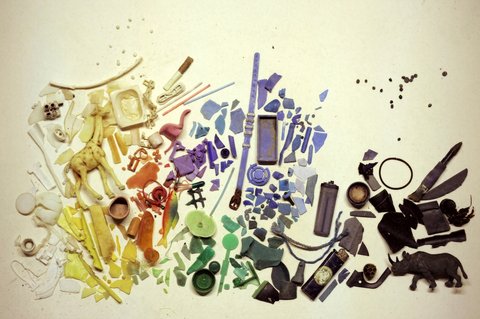
Mageninhalt
© Susann Maria Hempel
“Mistake” is what we call it. But that generally implies an ability to make a distinction. To mix one thing up with another. But in fact, a turtle does not see any difference between a plastic bag and a jellyfish. The archive thus chronicles an inability to distinguish living organisms from lifeless waste. It is all one and the same. Not even death makes them realise. There is no enlightenment; no belated understanding (“Oh, if only I hadn’t eaten the toothbrush!”), only baffling suffering and a radically foreign body that, “as in the fairy tale, can sometimes be heard rumbling around inside” (Nietzsche, Friedrich: Untimely Meditations II).
Or does the animal suffer at the end with foresight? The content justifies the packaging! And in the next fairy tale, the sorry bag of bones containing all that valuable rubbish is promoted to the status of a valuable reliquary. A herring-gull shrine, or a perch ostensory; a winged or finned reliquary, making the animals and their stomach archives into participants in a form of archivally motivated INTERSPECIES COLLABORATION. They pass on the indigestible remains of the human present to the future, and die to make the past retrievable.
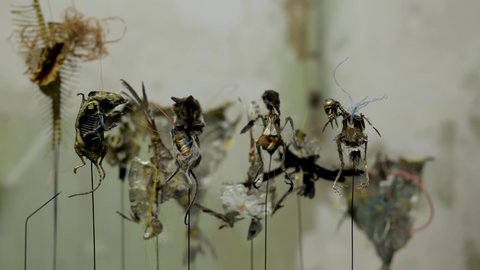
Filmstill aus Susann Maria Hempels "Die Hüter des Unrats"
© Susann Maria Hempel
Also of interest:
Every year, the German Academy Rome Villa Massimo awards the Rome Prize to nine selected artists, enabling them to spend ten months in Rome. The artists' works from the last two years are on display this year in the exhibition "Eppur Si Muove - Und sie bewegt sich doch" ("And Yet She Moves") at the Japanisches Palais. Angela Windholz introduces the house and its program.
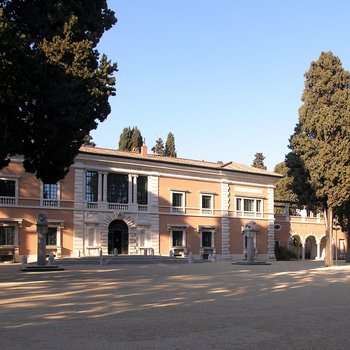
Disposable plastic cutlery is an icon of the global throwaway culture. It has been banned in the EU since July 3, 2021. Based on the collection of designers Peter Eckart and Kai Linke, the exhibition "Spoon Archaeology" at the Kunstgewerbemuseum explores this topic.
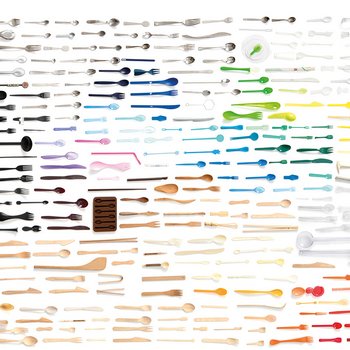
Marijke van Warmerdam’s work Eiskugel – quite literally an ice ball of ∅ 25 cm – is a modest piece that might have been somewhat simple if it weren’t also slowly melting in the gallery space. Jane Boddy on the tremendous energy put into the production of a clear, carved piece of ice currently on show at the Children’s Biennale "Embracing Nature" at the Japanisches Palais.
![[Translate to English:] Marijke van Warmerdam, Eiskugel, 1998. Photo: SKD, Oliver Killig.](/fileadmin/_processed_/2/5/csm_290321killig030_6a0648dbb8.jpg)